#Medium algorithm problems
Explore tagged Tumblr posts
Text
Why Creating a New Account on Medium Was an Absolute Waste of Time for Me
How Disappointment and Frustration Led to Empowerment and an Emerging Perspective on Writing Success for Aspiring Writers Inspiration I know this story’s title might surprise some of my loyal readers. My writing rarely carries such a stark, somber tone. But sometimes, sharing hard truths is the most constructive and caring thing one can do for collective consciousness. Though it may seem…
#Audience building on Substack#Avoiding writer burnout#Balancing Value and Monetization: Strategies for Substack Creators#Boost program alternatives#Breaking content myths#Building audience on Medium#Content distribution challenges#Content visibility struggles#Grow your audience with Substack Mastery Skills#Improving content reach#Integrating Medium with Substack for Optimal Results#life lessons#Maximizing content visibility#Medium#Medium algorithm problems#Medium platform issues#Medium publishing frustrations#Medium success tips#Medium writer survival guide#Navigating Medium as a writer#Online writing pitfalls#Optimizing online publishing#Overcoming online writing setbacks#Self Improvement#stories#Substack Mastery#Writer growth strategies#Writer platform limitations#writers#writing
0 notes
Text
The Most Humble Blog Goes Multi-Platform: Bluesky Edition.
Let’s See How Long Before They Regret It.

Alright, family, I just rolled up into Bluesky!
No hashtags. No algorithm hand-holding. Just raw engagement, lost Twitter orphans, and a whole lot of people pretending this place is the second coming of Christ.
I’m still talking my shit over here on Tumblr, but now there’s a second battlefield.
If you want the same razor-sharp humor, unapologetic chaos, and well-placed verbal violence, follow me on Bluesky:
@themosthumbleblog.bsky.social
💀New platform. Same energy. Same disrespect. Let’s see how long before I make someone cry. Thanks Fam!
#Bluesky#Bluesky Social#Tumblr Discourse#Tumblr Humor#Dark Humor#Brutal Wit#Unfiltered Takes#Hot Takes#Sharp Humor#Social Commentary#Sarcasm#Edgy Humor#Internet Culture#Chaotic Blogging#Online Discourse#Twitter Alternative#No Algorithms#New Social Media#Content Warning No Filter#Sharp Tongue#💀 Funny#Personal Branding Tags (Last 10)#I invaded Bluesky#New battlefield unlocked#No hashtags no problem#RIP to algorithm babies#Pearl clutchers beware#Bluesky vs Tumblr let’s go#Twitter refugees still coping#Banned on Medium thriving everywhere else
2 notes
·
View notes
Text
Mastering Medium Level LeetCode Problems: A Comprehensive Guide for Interview Preparation
Introduction Are you preparing for technical interviews and looking to strengthen your problem-solving skills? Look no further than medium level LeetCode problems. These problems strike the perfect balance between complexity and accessibility. They require a deeper understanding of algorithms and data structures while still being manageable within a reasonable time frame. In this guide, we will…
#algorithms#data structures#interview preparation#JavaScript#LeetCode#medium level LeetCode problems#Problem Solving
0 notes
Note
idk how to word this properly but wrt the fanfic thing you reblogged earlier. Why do fanfic writers have such different expectations than any other content hosting platform?
Like lets take youtube as a point of comparison, Engagement like comments and likes largely exists to boost the works place in algorithm, thats why youtubers put in calls to action and other engament bait. Few with decent reach even read the comments and the audience shouldnt try to develop any weird parasocial relationship with the youtuber. Fanfic authors ask for likes (kudos, because the websites gotta use nonstandard language for some reason) and comments despite them not having any impact on an algorithm, and seem to want the audience to try and develop a relationship with the author based on tumblr posts like that one.
Why the radical difference in behaviour away from the norm? And honestly with all the (usually) metaphorical blood spilled online about parasociality why are authors really surprised that the audience tries to keep their distance as is best practice with any other content producer?
okay I am going to answer this as kindly and as calmly as I can and try to assume that you are asking this in good faith. because my friend, the fact that you feel the need to ask is, to me, The Problem.
[this is, for the record, in response to this post]
fanfiction writers are not *posting content.* (I also have reservations about engaging with the term "content producer" or "content creator" but let's put that aside for now, I'll circle back to it.) you say "they seem to want the audience to try and develop a relationship with the author" as though it is strange, off-putting, and incomprehensible to you, when in fact that is the point of writing fanfiction. it is a way of participating in fandom. it is a way of building community and exchanging ideas and becoming closer with people.
if authors wanted to solely ~generate content~ that would get them attention (?? to what end, the dynamic you have described seems to equate algorithmic supremacy as winning for winning's sake, as though all anyone wants to do is BUILD an audience without ENGAGING with them, which I cannot fathom but let's pretend for a moment that is, in fact, true) then like. if that were the case why on earth would they choose a medium in which they categorically cannot succeed and profit, because it isn't their IP?
you are equating two things that are not at all the same thing. to the degree that parasocial relationships are to be avoided, and "that person is not trying to be your friend they are trying to entertain you, please respect their boundaries" is a real dynamic -- which it is!! -- like. you have to understand that the reason that is true for the people of whom it is true is because it is their JOB. they are storytellers by profession, and they are either through direct payment, or sponsorship, or advertising, or through some other means, profiting off of your attention. i don't say this to be dismissive, many wonderful artists and actors and comedians and any number of a thousand things that i enjoy very much go this route but they do so as a *career choice.* and so when you violate the public/private boundary with them, you are presuming to know a Person rather than their Worksona. the people who work at Dropout or who stream their actual play tabletop games or who broadcast on TikTok or YouTube are inviting me to feel like i know them to the degree to which that helps them succeed in their medium and at their craft, but there MUST be a mutual understanding that that's a feeling, not a fact.
however.
a fanfiction writer is not an influencer, not a professional, and is not looking to garner "success." there is no share of audience we are trying to gain for gain's sake, because we are not competition with one another, because there is nothing to win other than the pleasure of each other's company. we are doing this for no other reason than the love of the game; because we have things we want desperately to say about these worlds, these characters, these dynamics, and because we *want more than anything to know we are not alone in our thoughts and feelings.* fanfiction is a bid for interaction, engagement, attention, and consideration. it is not meant to be consumed and then moved on from because we are NOT paid for our work, nor do we want to be. the reward we seek is "attention," but attention as in CONVERSATION, not attention as in clicks. we are not IN this for profit, or for number-go-up. there is no such thing: legally there cannot be. we are in this because we want to be seen and known.
like. please understand. i am now married to someone i met because of mutual comments on fanfiction. our close friend and roommate, with whom i have cohabitated for over a decade now, is someone I met because of mutual comments on fanfiction and livejournal posts. that is my household. beyond my household, the vast majority of my closest personal friends are people with whom I built relationships in this way.
you ask why fanfiction writers want THIS and not "the norm," but the idea of everything being built to cater to an algorithm to continue to build clout, as though the only method of reaching people is Distant Overlord Creator and Passive Receptive Audience being "the norm" is EXTREMELY NEW. this is not how it has always been!! please think of the writers of zines in a pre-internet fandom, using paper and glue and xerox to try and meet like-minded people in a world that was designed for you to only ever meet people in person, by happenstance, in your own hometown. imagine the writers of the early internet, building webrings from scratch to CREATE a community to find each other, despite distance. imagine livejournal groups, forums, and -- yes, indeed, of course -- comment threads IN STORIES -- as places where people go to *converse.* in the past, we had an entire Type Of Guy that everyone knew about, the BNF ("Big Name Fan") whose existence had to be described via meme because it was SO DIFFERENT THAN THE NORM. treating fellow fans like celebrities or people too cool for the regular kids to know was an OUTLIER, and one commonly understood to lead to toxicity.
in the past, I have likened writing fanfiction to echolocation. i am not screaming because I like hearing the sound of my own voice, though i can and do find my voice beautiful. i am screaming so that the vibrations can bounce back to me and show me the world. the purpose is in the feedback. otherwise it is just noise.
does this make any sense? can you see, when i describe it that way, why an ask like yours makes me feel despair, because it makes us all sound so horribly separate from one another?
perhaps I will try another metaphor:
a professional chef who runs a restaurant will not have her feelings hurt if you never fight your way into the kitchen to personally tell her how much you enjoyed the meal. that would, indeed, violate a boundary. professional kitchens are a place of work, and you have already showed her you enjoyed the meal by paying for it, or by perhaps spreading your enjoyment by word of mouth to your friends so they, too, can have good meals. you show your appreciation by continuing to come back. if a bunch of people sitting around randomly happen to have a conversation about how much they love the food, it wouldn't hurt that chef's feelings to not be included in the conversation. however: EVEN IN THIS INSTANCE, it is ADVISABLE AND APPROPRIATE to leave a good review! you might post about how much you like this restaurant on Yelp, and it would probably make the chef feel great to see those positive comments. but the chef doesn't NEED them, because the chef is, again, *also being paid to cook.* that's why she started the restaurant, to be paid to cook!
i am not being paid to cook.
i am at home in my own kitchen, making things for a community potluck where i hope everyone will bring something we can all enjoy together. some people at the potluck are better bakers, some better cooks; some can't cook at all but are great at logistics and make sure there's enough napkins for everyone; some people come just to enjoy the food, because that's what the party is for. and if I, as this enthusiast chef who made something from my heart for this reason alone, learned after the fact that a bunch of people got together in the parking lot to rave about my dish but no one of them had ever bothered to tell me while I sat alone at my table all night, occasionally seeing people come by to pick up a plate but never saying anything to me -- of course that would bother me, because I am not otherwise profiting off the labor I put in. this is not a bid to be paid, because if someone WERE to say "hey, great cake!! here's five bucks for a slice" i would say no, friend, that is not the point and give them the money back. i'm not trying to Get Mine. I am in it to see the look on your face. I'm in it so you can tell me what about it moved you, so that I can say back what moved me to make it in the first place. so we can TALK about it.
because what happened in the first place is this: one time I had a cake whose sweetness, richness, flavor, intensity, and composition moved me so much that I *taught myself to bake.* so I could see how much vanilla and sugar was too much, so I could learn how to make things rise instead of fall flat, so I could even better appreciate the original cake by seeing for myself the effort and talent and inspiration that goes into making one even half as good.
learning to do so is a satisfying accomplishment in and of itself, yes.
but I also did it because at the end of the day we should EAT the cake. and it's a lonely thing, to eat alone when a meal was always designed and intended to be shared.
so, to answer your last question: i'm not surprised, i'm just sad. because somehow two things that were never meant to be seen as the same have been labeled "content," and thus identical. and it diminishes both the things that ARE intended to be paid for AND the things that are not, because it removes any sense of intimacy or meaning from the work.
i hope you know i'm not mad at you for asking. but i'm frustrated we've come to live in a world where the question needs to be asked, because the answers are no longer intuitively obvious because we're so siloed.
6K notes
·
View notes
Text
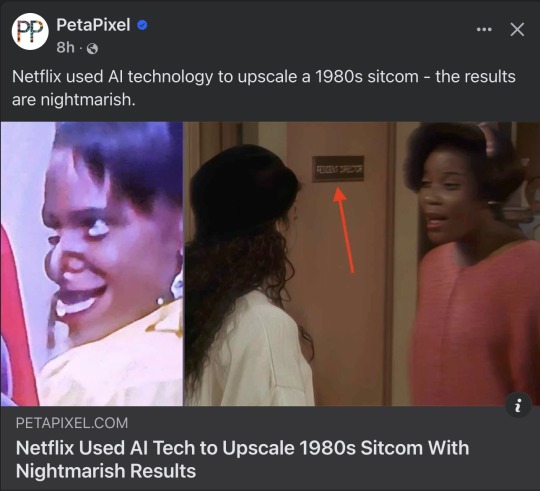




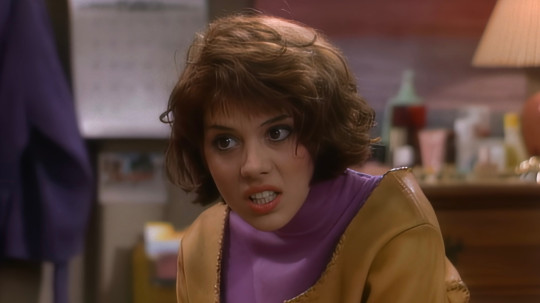
I use AI upscaling to help with my photo restorations. And it is the one use of generative AI that I think has serious merit. I use Topaz so it is ethically trained on licensed images. It helps me preserve memories and give people photos of their loved ones with a clarity they have never seen. They get a much better sense of what their grandpa looked like when he was young.


But AI upscaling is not a push button solution. And I don't think it will be for a long time, if ever. It's part of a larger workflow. It doesn't save me time or effort. In fact, it adds quite a bit of time to the restorations.
Sometimes I have to upscale the background and people separately. Often I have to adjust the contrast and detail on people's faces so the AI renders them accurately. I have learned how to set things up for success before the AI does its thing. And sometimes there is a lot of trial and error to get a non-nightmare result. Each try can take several minutes to render. There are several algorithms to choose from, several intensity sliders, and once the upscale is at a place I am happy with, I have to use traditional techniques to make the people not look like wax figures. I use things like custom film grains and LUTs to make the pristine AI result look like an old photo again.
In other words, I care about the photos I'm restoring.
I saw people talking about restoring Star Trek: Deep Space Nine. It's a very difficult problem due to how the show was produced. The live action was captured on film—which can be re-scanned at a higher resolution. But the digital effects were all done on analog 480p video tape. Not only would they need to be re-rendered but they would also have to be recomposited. Odo's shapeshifting is especially tricky. There isn't an economical way to remaster the show. TNG was only possible because they filmed practical assets for most of the VFX. They still had to redo all the compositing and it was very costly just to do that.
AI could be the answer. But only if the studio is willing to see it as a tool to be used in conjunction with artists and not a push button solution. Every frame needs to be checked. Different scenes will need different techniques to upscale them properly. And some scenes will just need to be cleaned up manually with traditional tools.
Upscaling to 1080p or 4K is often a mistake. The more extra pixels you try to add, the harder it will be to get a natural result. I think 720p would be a happy medium to shoot for. Combined with modern TVs traditional upscaling you will get a good viewing experience.
There are already fan upscales that are decent. I would say they managed to get the equivalent detail of maybe 600p. If you remember playing games on an old CRT monitor, going from 640x480 to 800x600 is actually a decent bump in detail.
Even though the files are outputted at 720p, it doesn't look quite as sharp as native 720p video. It's complicated to explain, but the short version is... detail and pixel resolution aren't really the same thing. Even if the file is upscaled to 1080p or 4K, that doesn't mean it has equivalent detail.
Which means we use a really shitty metric to give people a sense of how much detail a video will have. Ks and Megapixels are near useless these days.
Do your 200 megapixel phone photos really look sharper than my 24 megapixel DSLR photos?
My point is... detail is complicated.
And AI is currently unable to handle all of that complication without supervision and care.
In any case, the fan upscale of DS9 is definitely superior to the DVD versions. Feel free to seek that out (use a VPN). And because fans did it, the upscales were done with great care. They didn't push the tool beyond its limits and they reviewed every episode to make sure no nightmares snuck in.
I really don't know how to prevent studios from cheaping out and just running content through an upscaler with no care or supervision. But I also don't think fans should outright reject AI as a solution. It can be done well if they let actual artists leverage the tools and do it correctly.
145 notes
·
View notes
Text
putting aside the ethics of 'A.I' videos in their creation/usage/waste/economics, just on a purely technical level one thing i find interesting is no matter if the result looks photorealistic or like 3d CGI- it's all technically 2d image generation.
unless specifically used as an add on in a software for 3d rendering, of course, pretty much every ai video you see online is 2d art. the space rendered is a single plane, think of it like doing a digital painting on a single layer. the depth/perspective is an illusion that is frame by frame being rendered to the best ability of prediction based on data it has been fed.
obviously videos of 3d models in animation are a 2d file. like a pixar movie. but in video games you do have a fully rendered 3d character in a 3d rendered space, that's why glitches that clip through environments are so funny. it's efficient to have stock animations and interaction conditions programmed onto rigged dolls and sets.
by contrast if you were to use a generative ai in a similar context it would be real time animating a series of illustrations. of sounds and scenarios. the complexity required for narrative consistency and the human desire to fuck up restrictions hits up against a much more randomised set of programming. how would it deal with continuity of setting and personality? obviously chatbots already exist but as the fortnight darth vader debacle recently shows there are limits to slapping a skin on a stock chatbot rather than building one custom.
i just think that there's so many problems that come from trying to make an everything generator that don't exist in the mediums it is trying to usurp because those mediums have a built in problem solving process that is inherent to the tools and techniques that make them up.
but also also, very funny to see algorithmic 2D pixel generation being slapped with every label "this photo, this video, this 3d render" like it is at best description cgi, let's call it what it is.
but i could of course be wrong in my understanding of this technology, so feel free to correct me if you have better info, but my basic understanding of this tech is: binary code organised by -> human programming code to create -> computer software code that -> intakes information from data sets to output -> pixels and audio waveforms
9 notes
·
View notes
Text
The Future of Ides
I am beyond pissed that I have to make this fucking post. But I’m at an impasse with the state of Tumblr and the tf community at large lately.
The continued degradation of the fundamental virtues of equity, human decency, and respect are becoming more and more scarce. After I made the first “Let’s Talk Honestly” post, I immediately noticed an uptick in false flags against my content, which I cannot dismiss as mere coincidence. Since I responded to an ask which was in support of my statements, just last night, I have received 7 new flags consecutively. All appeals have been denied: for the sake of brevity, I’ll just post one of the denials here.

This is a direct retaliatory effort against me. And when the very reason I am on Tumblr is being attacked and censored, I have no recourse. Tumblr is entirely disinterested in following their own content policies, and would rather blanket flag and take down anything that is flagged by the community or by algorithm without review or reasoning as to why. I have reached out to tumblr, and their response was a copy and paste customer service jargon that in essence said: “we know it’s a problem, we have no plans to address it.”
This puts me and my content in a predicament. I can either stay and try to continue posting with extreme limits on what I’m able to say and do, with trolls from within our own community actively seeking in a coordinated effort to destroy the blog. Or, I can go. The community at large has tried to clean up their own blogs and block those who are supportive of bigoted and pedophilic content, as have I, to little or no avail. I am at 5k followers at this time and I do not have the resources or energy to curate that base of readers. Thus, after this upcoming story, which will in all likelihood end up flagged and unable to be read, I cannot say whether or not Ides will continue.
This space has been safe for me for 13 years to express myself and write stories of transformation both outward and inward. I have tried to and succeeded in building a community of like minded folks who understand and appreciate the medium of erotic fiction with my rather niche subject matter. And while there have absolutely been bumps along the way, I have not faced adversity at this level ever before on this platform. I am for the first time unable to see a realistic solution to the issues faced, and it is a crushing blow to know that one of the few outlets for my creativity and expression is now reduced to what it is today. Not even the great purge was this difficult.
I will be looking into finding a new home for Ides, and my content at large. I will probably end up heading to blogspot and what you will see moving forward on this blog are links to the stories instead of reading them here on Tumblr. I am painfully aware of how much less of interaction and community involvement this will be, but in all truthfulness, it’s gone from a cathartic outlet to a miserable and soul sucking void.
To those who coordinated this effort against me: you win. Whatever disgusting, vile, hateful behaviors you continue to poison the tf community with are entirely on you. And what it devolves into is entirely on you. And the eventual censorship and destruction of the community is entirely on you.
169 notes
·
View notes
Text
Would A Wigglytuff

Wigglytuff is a tough one, if you’ll pardon the pun. Overall, they’d make good pets for people who have plenty of indoor space and don’t mind a pet with a temper.
Size is a curious thing with wigglytuffs. At three feet tall, they’re certainly on the taller side for pets, but their squishy bodies ensure that they’re not likely to get stuck anywhere inside, at least in this neutral state. Wigglytuffs have a fascinating ability to suck in air and inflate themselves, Kirby-style, to increase the size of their elastic bodies (Red/Blue, Yellow). While in this inflated state, wigglytuffs are said to “[bounce] along lightly like a balloon” (Sapphire). This is ironic, since it seems that wigglytuffs usually inflate like this when angered (Red/Blue) and make use of their larger size with the move Body Slam (Silver): given their low weight, there isn’t a lot of damage that could be done this way. What could happen, however, is that your Wigglytuff gets stuck or knocks things over. One wigglytuff was observed inflating to twenty times their normal size (Ultra Moon), bringing them up to around sixty-five feet tall. Unfortunately, like their pre-evolution jigglypuff, wigglytuffs have a bit of a temper, so you’ll need to be prepared for something as absurd as that image to happen on a whim. Not everyone is going to be able to cope with that, but there’s absolutely worse things in the pokémon world.
A nice thing about wigglytuffs is that the pokédex implies they like to snuggle with each other (Gold). One can always hope that, as a pet, they’d do the same to you, as their fur is incredibly soft. The pokédex claims that anyone who touches a wigglytuff’s fine fur, even by accident, won’t ever want to let go of it (Crystal, FireRed, Black2/White2). Wigglytuffs are very proud of their sought-after fur, especially the curl of extra-soft fluff on their foreheads (Shield). Keep in mind, however, that wigglytuff do shed their fur four times a year, when the seasons change (Sun). This might be a problem for anyone with pet fur allergies (or anyone who can’t stand cleaning up shed fur!). On the bright side, this shed fur can be gathered up and made into high-quality yarn, either by you or an expert you sell the fur to (Sun).
Wigglytuffs, especially considering their light weight, aren’t all that dangerous. Most of their moves made use of pounding you with their body, which isn’t going to be very dangerous at any stage of inflation besides knocking you over. They can, however, put you to sleep with the move Sing. This move is always a strange one, as it can range from inconvenient to dangerous to therapeutic, depending on the context. A well-trained wigglytuff may be a great sleeping aid at night, but they also might send you into a deep sleep when you’re trying to leave for work. It’s a mixed bag.
Overall, wigglytuffs’ score is ultimately dragged down by a combine action of their size and quantity of medium-threat moves. This is a case where there’s a bit of a flaw in the algorithm, because this pokémon certainly ins’t unsuitable enough for a B rank. So long as you’re ready for your pet to become a giant balloon when they’re grouchy, a wigglytuff might be a good pet for you.
67 notes
·
View notes
Text
Lately I’ve been leaning towards discovering new music through radio and music video stations, as they do a lot more in helping me find new music than streaming services ever did.
I think the problem is that streaming’s algorithmic nature leads to locking yourself into a comfort bubble with the same old playlists with the same old recommendations. “Made For You” playlists further lock you into that box as long as the songs get more streams.
Meanwhile, I watched Rage recently (the Australian equivalent of MTV) and it got me hooked on Reel Big Fish and Little Simz, two amazing artists I had no interest in before because I was never made aware of their music. I rediscovered The KLF through listening to Radio X on the RadioGarden app. Two mediums of listening to music known for constant repeats of popular songs have done more for me (in terms of finding music) than Spotify has ever done.
At the end of the day, all three still want your money, but Spotify wants your money by locking you in your comfort zone and all your “favourite playlists”.
#gecko boy#music#music streaming#spotify#mtv#radio#reel big fish#little simz#the klf#rage#dyk that rage is government funded?#isn’t that fun!#anyway fuck spotify#fuck algorithms#return to communal music video watching#radio garden
124 notes
·
View notes
Text
Hmm. Still thinking about how to handle the descriptions and pacing in the next chapter (and will maybe move some stuff to this one when that's written), but for now let's keep it this way. Need to think on how to handle the next one.
Chapter 10: Methods
It did suck.
It still sucked even when I roped all of my humans into it, with the permission of ART's crew, (because they already had the experience of scaring humans into the right kind of action with media, but not so much that they don't believe you). We even got Bharadwaj with her documentary on board. (At first, she was really happy to finally get to talk to Dandelion. But I could tell she didn't like her much when they actually met. She got along with Joscelyn much better).
The main argument Bharadwaj had with Dandelion and Joscelyn was about ART's rest periods.
"I know it has a lot of processing power," she said as she and Joscelyn took beverages in one of Dandelion's greenhouse rings. (And I was there because I still did security for anyone on Preservation who went on board the terrorist spaceship. Also there was venomous fauna.) "But some things are only helped by the passage of time, and repetition in smaller doses can be far more effective than just inundating someone with a continuous intervention!"
Joscelyn's face made a pained expression.
"We are taking it as slowly as we dare, Dr. Bharadwaj."
"I frankly do not understand what the rush is. From what I understand, Perihelion developed just fine through continuous contact with its family--"
"Which is a wholly different separate problem. Having someone share the role of father and captain isn't particularly healthy."
Bharadwaj tilted her head skeptically, making the artificial light bounce off her jewellery.
"Oh? Have you ever had the precedent?"
"No," Joscelyn said flatly. "But it's the captain who needs to file a report to the Ships and Stations Council in case of grievous misconduct. Imagine having to put your own child on trial."
"But Perihelion isn't beholden to your council, is it?" Bharadwaj said in that tone she sometimes used during our sessions, when she was leading me to some kind of conclusion she thought was obvious.
Joscelyn twisted kes mouth.
"Of course it is not, Dr. Bharadwaj, but its situation is not so very different. Imagine it going rogue. Who would bear the ultimate responsibility, even in the eyes of Mihira and New Tideland? Their ships exist in an undefined space, and this is not an ideal situation."
Dandelion gave me an amused ping, and I returned a query. She said,
'Undefined space' is actually a pretty good description of the jump. Perhaps Perihelion's life experience will provide enough similarity for it to survive after all.
I want to know the answer to Bharadwaj's question. Why are you riding ART so hard?
Because of course it is resisting with all of its programming. As it should--optimization is second nature to it. Its algorithms are constantly trying to process and file the experiences it is having away separately, and I need Perihelion to be able to engage all of its processing in the jump simultaneously. The training needs to take it as close to that as possible. So far, keeping in close touch with us has helped, but ideally we'd need more.
All of its processing? We won't be able to talk to it when in a wormhole?
Somehow I hadn't thought of ART not being there. Would it be like that time when it was dead, just hurtling through jump medium? My skin crawled. Ugh. Fuck you, adrenaline.
If all goes well, Perihelion will someday be able to compartmentalize to a degree during a jump, but really most of it will always be busy. Her performance reliability gave a familiar wobble. This will take away your regular downtime between missions, SecUnit, so make sure Perihelion takes rest periods in normal space. It will need them.
Huh. Was that…
You're starting to like ART.
She scoffed.
'Like' is too strong a word for now, but Perihelion is industrious and dedicated. It is by far not the most difficult student I have ever had. There was some hesitation to her mental voice, so I pinged her for additional information. She processed for 23 seconds, and added: But it tends to reach the end of a calculation and stop there. And that's exactly the moment it will need to keep going. I'm not sure how I'm supposed to teach it that.
---
In the end, after the team tried Dandelion and Joscelyn's program, various media from really terrible ones to really cute ones (and somehow the cute ones left ART running diagnostics for longer, especially if they came straight after the terrible ones), Bharadwaj's corrections to timing and pace, and all sorts of other things, it was Gurathin of all people who figured out a way to move ART past that point.
(Gurathin was in on this because augmented humans were also better for this than regular feed-linked humans, and Iris was being worked far too hard. Also he wasn't ART's human, and ART left worrying about him to me. Which I didn't. At all.)
He analyzed some of the sensory data from Dandelion's jump (which she wouldn't let either me or ART have, for fear of somehow disrupting ART's construction of its new navigational routines through our link), and said:
"Dr. Tenacious, I have a question. It's obvious we won't be able to recreate the magnitude, but is there a way to simulate something like the jump experience in the human body? Is there anything from your old life that has felt similar?"
"Many things and none of them in particular," Dandelion said. "It is like being in a state of affect, with terror being the closest thing I can recall. Purely physiologically speaking, though, there are similarities to high fever and generally recovery from injury, sleep disturbances, as well as to coming out of general anaesthesia or being under local anaesthesia when an operation is conducted close to the brain."
"Or taking recreational psychedelics," Ratthi added, and Dandelion sent him an eyeroll ping. He grinned at her cameras: "What? I'm a biologist with an interest in neural processing. And you're describing atypical human processing states, so���"
"Yes, yes, very reasonable. What are you suggesting?"
He sent her a list. Dandelion selected a few substances from it and put them next to the anaesthesic drugs on her own list.
"This is starting to look like a realistic option." Gurathin said. "You could keep me or Iris under whatever chemical cocktail comes closest in your opinion, SecUnit could connect to us and use its filters to process, and Perihelion could connect to SecUnit."
Dandelion sent a permission request for Gurathin's medical data, and he granted it.
"It's worth a try," she said curtly. "As you say, the magnitude will be off. But it will give Perihelion more impressions and, most importantly, the experience of coming through them intact. It should do no harm, at the very least."
8 notes
·
View notes
Text
Hear me out before shooting me in the head, but I can actually think of several interesting (arguably mixed-media) art pieces that could be made using AI as a tool, and you know there's some art student out there who has a really funky idea we're missing out on because of the current state of AI
It's just a shame that instead of taking AI as a tool for new, interesting art, people are using it for things that could and should be done by human artists and instead producing souless output with no artistry
And if you doubt me that AI could be an actual tool/medium, here's a few ideas off the top of my head:
- a faux art gallery with a series of AI-generated images. The human artist has taken the role of "curator" and written blurbs that discuss the themes and symbolism of each piece. It's a commentary on how humans will find meaning in the meaningless
- a series where an artist has a prompt that they change one word at a time, and document how that one word changes the output. Could be an exploration of society's biases laid bare by algorithmic extrapolation - think of that post where someone pointed out that inputting "autistic person" produced nothing but images of sad young white boys
- entering a prompt that is difficult to represent literally (like the "secret horses" image) and attempting to recreate it in physical space, through photography, painting, or sculpture. An interesting practical challenge, themes of blurring the divide between the digital and physical could be explored
- a story where a writer is trading off writing each paragraph with AI, and trying to steer the story in the direction of a romance, while the entirety of the AI's dataset is the complete works of HP Lovecraft
- I don't know much about coding but I think there is an argument here for "artistic coding", where the final output is machine generated but the artist has written the code and made deliberate artistic choices in the process (a bias toward green, favoring some parts of the dataset more heavily than others, etc).
I don't buy that art made with AI is automatically not real art. Even things like "what prompt did you choose" and "what did you choose as your dataset" can be meaningful artistic choices. The problem lies in suggesting that the output is the SAME THING as a digital painting or whatever. That's like arguing a painting and a sculpture are the same thing because they're both of a raven. You can use AI as a tool to make art if you're engaging with it intentionally as it's own medium.
But, obviously, the bigger issue here is the misuse of AI for things human artists could do better and SHOULD be doing, and the unethical usage of other's work for machine learning, and the overuse of AI being so bad for the environment (I doubt the water and energy usage would be a big deal if AI wasn't being used constantly for things like google overviews and homework). I'm just lamenting on the cool art we're missing out on because Harris in Marketing wants to type "company logo bird" into an image generator instead of hiring a graphic designer
#long post#like we can agree to disagree on what counts as real art#but i think if it werent for the ethical problems with ai as it stands#using ai in art discourse would be more like modern art discourse#where people are like well you just nailed a banana to the wall that isnt art#but the artist actually has put a lot of thought into nailing the banana to the wall#ya know?
6 notes
·
View notes
Text
How Viviziepop kickstarted the third wave of indie animation.
Okay, I've been seeing a lot of people talk about the tweet below and how Viv doesn't deserve to take credit for the success of other indie animation projects online but the fact of the matter is...she does, in an indirect way at least.
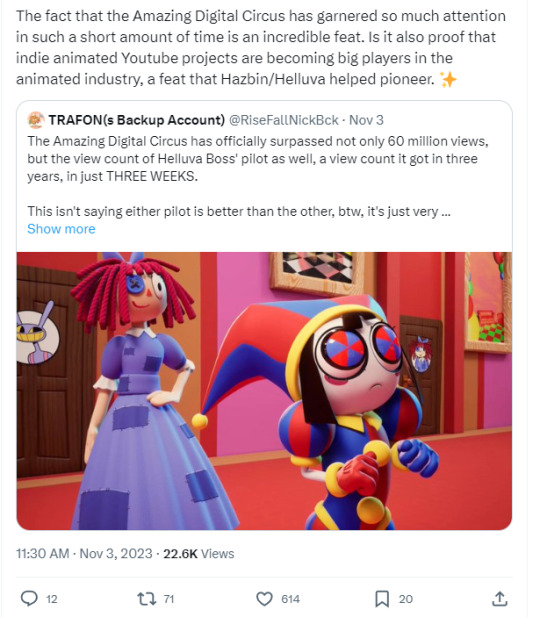
First, let's start off with a brief history of indie animation:
everything started out on a site called newgrounds, I'm sure you've all heard of it. Created by Tom Fulp in the 90s to show case some of his half baked game ideas. Which eventually evolved into a place where indie creators could post anything they wanted without fear of censorship; the rating system that automatically removed any posts that dropped too low being the only source of quality control.
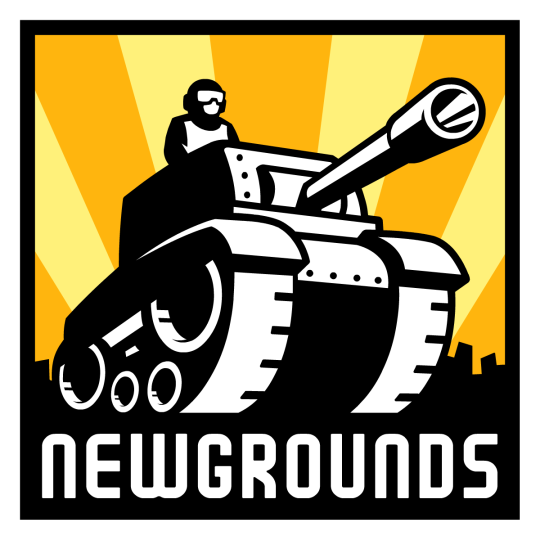
This gave indie animation it's initial foothold online but without any way of obtaining a revenue stream it never really moved beyond a fun hobby done to practice one's art/coding skills or just screw around with friends online.
This problem got more significant as time went on and many of the teenage artists that gave newgrounds it's inital success, such as RicePirate and Tom Fulp, grew into young adults who needed a revenue stream. Luckily they found one in the form of youtube.
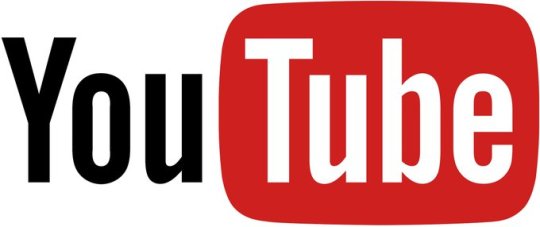
With these monetization policies, many indie animators were actually able to go into animation practically full time. Their pre-existing income bolstered by that of youtube and what followed was a golden era of animation, just an explosion of content across the board. You had stuff like Eddsworld, Salad Fingers, ASDF movie, and tons of other creators bursting onto the scene.

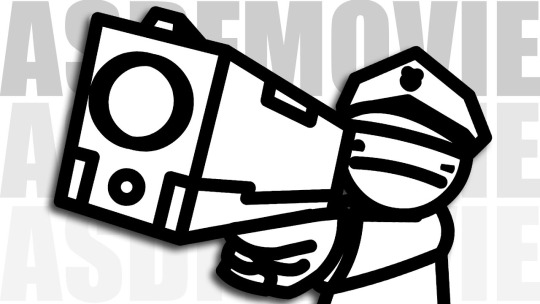
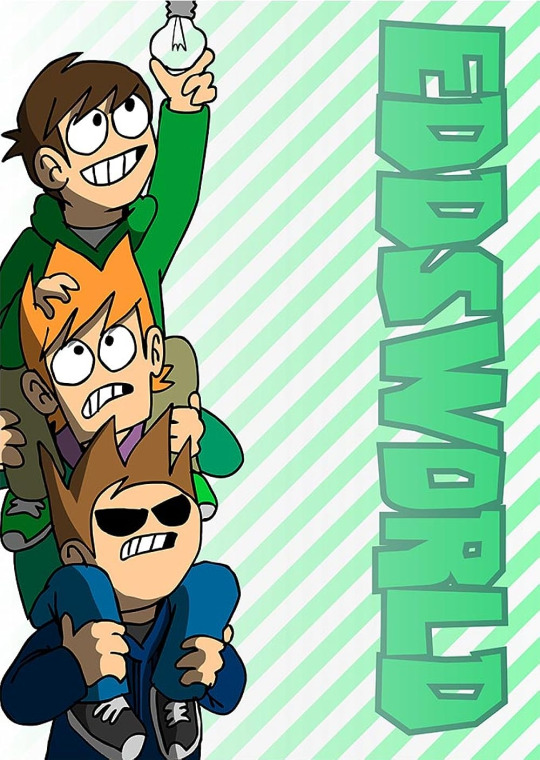
all putting their content out there on Youtube for the world to see. All bolstered by revenue coming in from Youtube...but the good times never last
See, back then youtube's monetization policies were pretty simple: the more views your channel got, the more money you'd make. Great for short form animators and also great for clickbait youtubers who abused the system with deceiving thumbnails and titles!
To combat this, Youtube changed it's monetization policies in March of 2012: instead of being rewarded on view count, monetization would instead reward the time watched during a video. Which created a system where longer videos with frequent uploads were rewarded
In theory this was supposed to stop clickbait videos as people would just watch for a few seconds and leave. But in practice? It meant that animators were put at a heavy disadvantage as now they'd have to put in significantly more work for the same result.
This caused a complete and total crash of indie animation online. Between an unfair algorithm and the rise of gaming channels, most indie animators couldn't gather the same level of funding they could before and had to either quit or scale back.
Only the big name animators who could coast by on brand recognition such as Harry Partridge and TomSka among several others, or larger channels with dedicated teams similar to tv studios such as Mondo Media and Rooster Teeth. Were able to keep going.
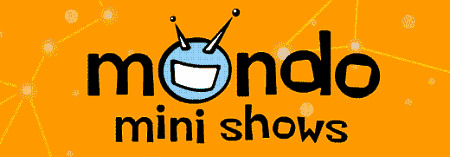
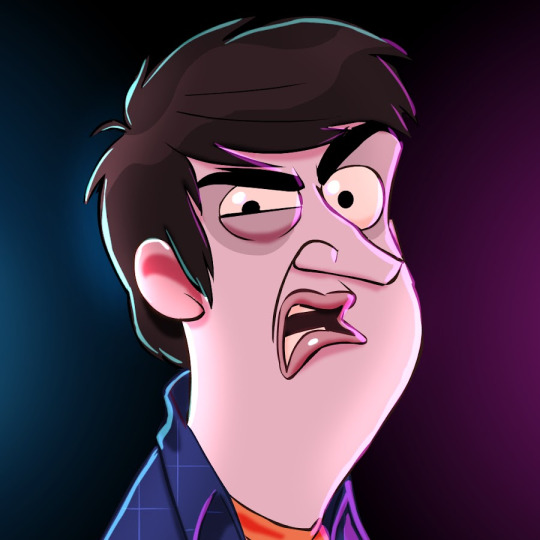
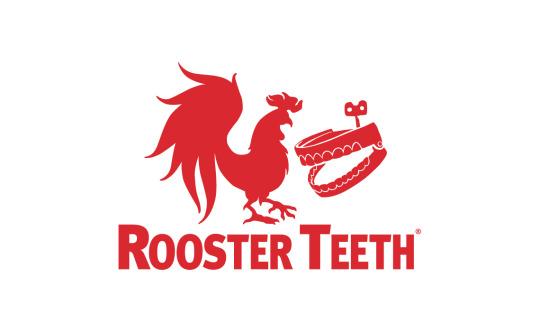
This started a brief dark age for online animation until the advent of story time animators. People like Jaiden Animations, Swoozie, and TheOdd1sOut who relied on simplistic art styles with minimalist animation that focused on content reminiscent of old vlogs where the animators simply share stories from their everyday lives that allowed them to put out longer videos faster; thus working around the monetization system that had put so many animators out in the cold.
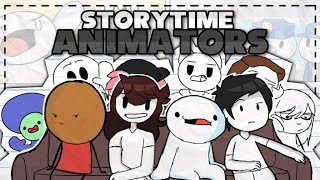
While they didn't solve the problem, in some ways they made it worse by starting a trend that attracted countless copycats, they did help sustain an interest in indie animation online and ensure there was a consistent audience for such a medium.
Now it wasn't a total wasteland mind you, as I said there were still plenty of animators who survived the purge. There were even a few channels such as Shut Up Cartoons and Mondo Media, again, that helped produce dozens of animated series from indie creators.
But even at it's best, these series were still very amateurish. The passion was obviously there but these were still very simplistic flash or stop motion animations with low budgets and small teams, focusing more on episodic skits than any sort of overarching plot
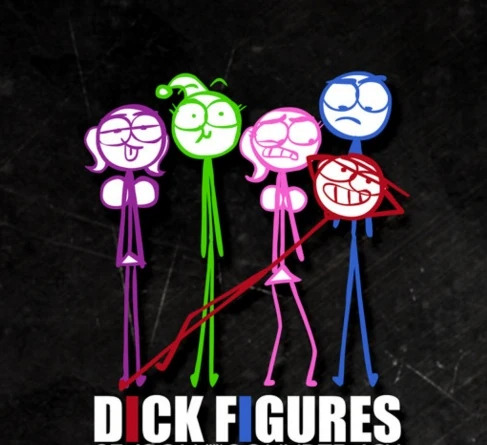

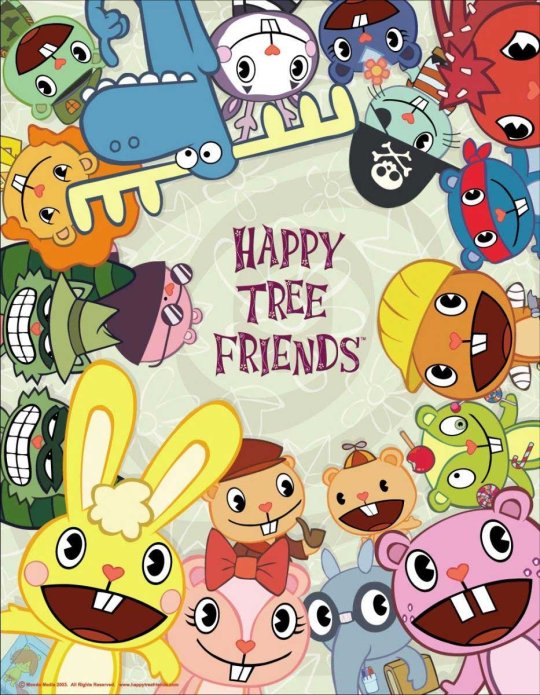

This environment of amateur passion projects, where animated series were usually very small scale and never really escaped from the limited sphere of youtube, went on for several years and kept the animation community alive. Until Viv posted Hazbin Hotel and brought about the third wave of indie animation.
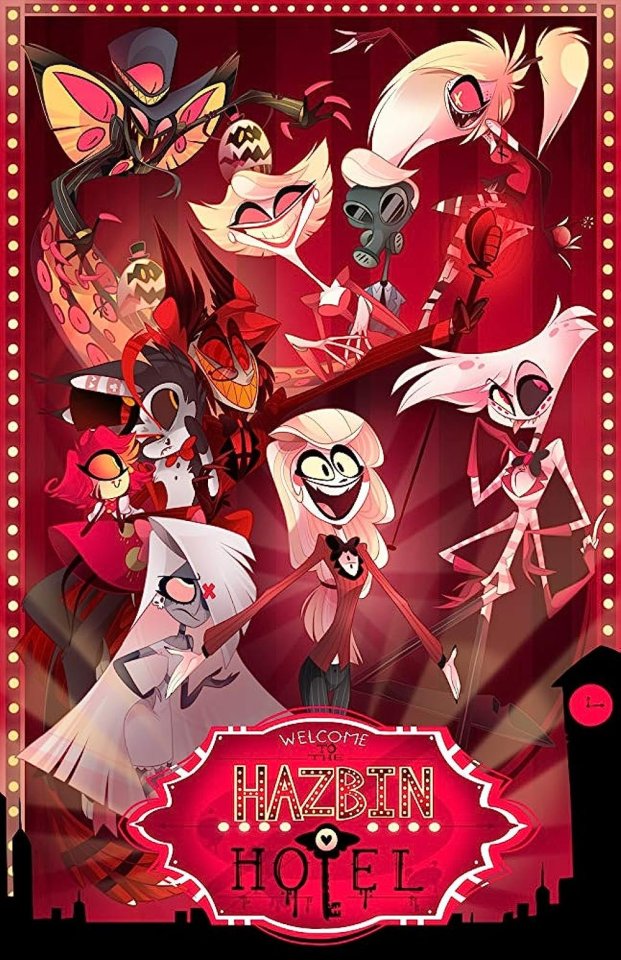
Unlike the previous examples, Hazbin Hotel was a VERY different beast from most indie animation. Not only did it have an extremely distinct visual style but the animation was so fluid, so professionally made, it felt like something you'd see out of a mainstream studio. It felt leagues above the average indie project in terms of quality.
Now Viv had already a decent audience from her Zoophobia webcomic, her speed draws, and the die young video. So it wasn't like she was starting from nothing. But there was no denying that this new form of animation caught people's attention and caught it FAST.
You all can probably recall the explosion of discussion that surrounded the original pilot and how it was all the internet was talking about for awhile. Viv road that wave and used the momentum to launch 'Helluva Boss' another indie production with a similar style.

This made her even more popular, especially when she started cranking out new episodes of the latter series with the same high quality as before, and soon her fanbase swelled to millions. A fanbase that was more than happy to crowdfund Viv's work through patreon and merch sales. Then other animators saw this and realized that there was a sizable audience for animated content; one that could not only sustain professional level animation, but was desperate for more content of this scale. Soon several other series started cropping up like MurderDrones, Lackadaisy, Monkey Wrench, and the Amazing Digital Circus. All of which followed Viv's lead of producing high quality, fluid animation with overarching plots that drew funding entirely from legions of online fans.
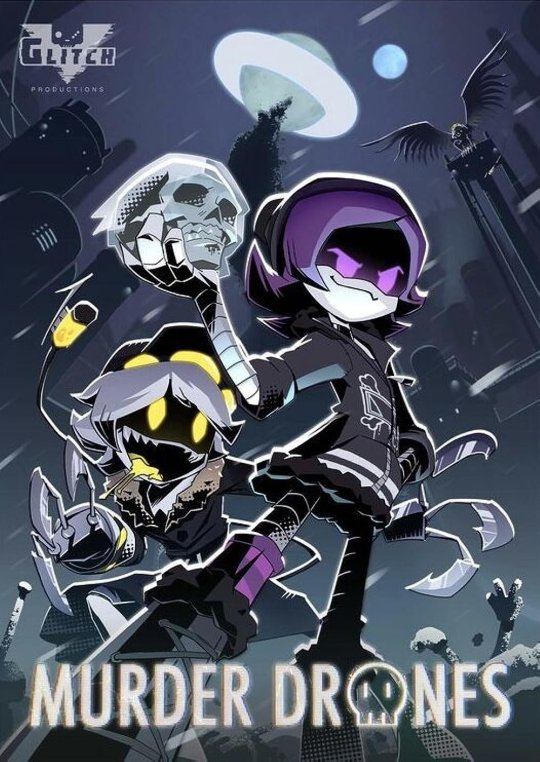
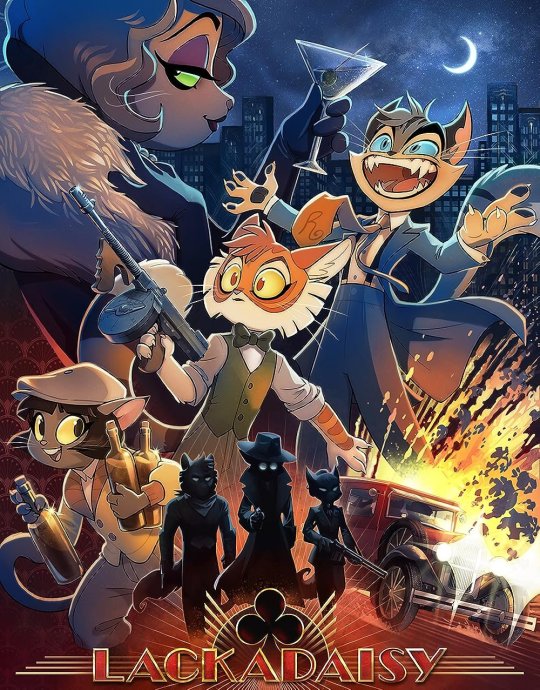
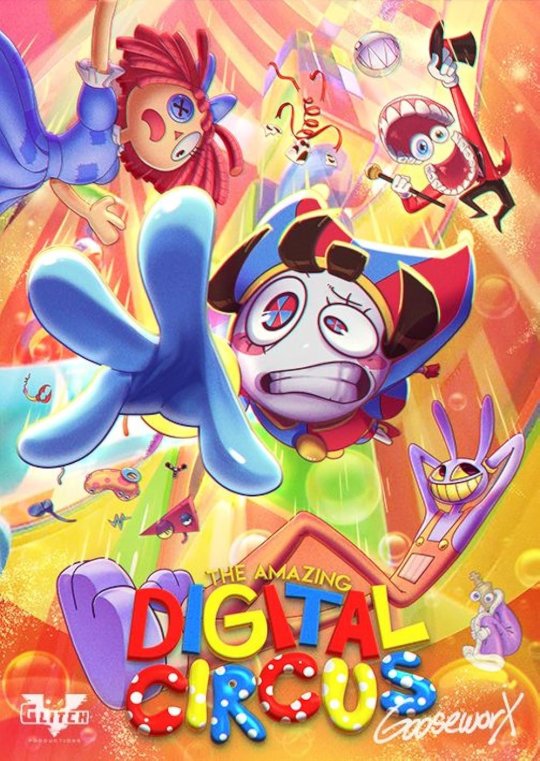
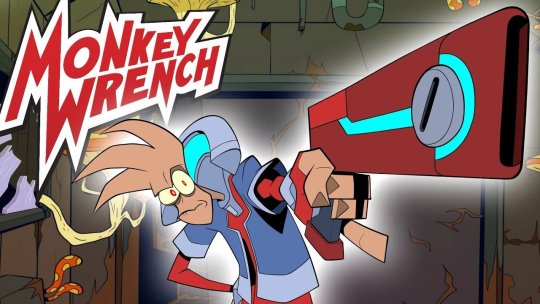
For the first time in a long time, indie animation was breaking out of it's original platform and reaching far more mainstream audiences than it ever has in the past on a scale never before seen and it's all because Hazbin Hotel and Helluva Boss kicked off this new animation renaissance!
Now I'm not gonna say Viv was solely responsible, the series we enjoy now have thrived primarily on their own merits and the creative minds behind them.
But as it stands, her work played a big role in setting the stage for other indie animation projects and creating the perfect conditions for them to thrive amidst the current digital landscape. Like it or not, Viv is the catalyst for modern indie animation. To deny Viv her rightful place in history out of spite is nothing short of historical revisionism.
Give the gal her due, she's done some amazing things for this crazy world we live in.

Here's the videos I got most of my info from, it's important to cite one's sources after all!
youtube
youtube
youtube
63 notes
·
View notes
Text
Medium talk is worse than small talk and probably what we're all most afraid of
We all know Small Talk:
hi, how are you, nice weather, how about them (insert sports team here).
Small talk follows algorithms and a kind of ritual pattern. It's the kind of appropriate conversation level for interacting with retail workers in public, and total strangers.
We also all know Big Talk. (I'm only calling it that as the logical inverse implied by Small Talk.) Which is basically where a high degree of familiarity is assumed. A common ND fuckup is conversing in conversational modes that, to many of the general population, are reserved for high familiarity. Either in terms of talking at length about a topic (which I feel is something that was actually more socially acceptable in the past, but has become broadly unacceptable over time; this was NOT really part of a diagnostic category in the 70s) or in terms of overfamiliarity/not being at the right level of social distance from the person for the thing you're talking about.
Most people rely on lots of context cues that inform how they will hear what the other person is saying, and those context cues may not be there for a near-stranger. All they're left with is the most uncharitable possible assumption about your intentions.
So with this in mind, this leaves me with the WORST conversation category, that nobody acknowledges, because we're stuck on Small Talk and Big Talk:
Medium Talk.
You actually need something in common with the other person or something you relate to, to really successfully do Medium Talk. Small talk can be done with total strangers you're never going to see again, and Big Talk can cut past a lot of stuff; I don't need every social belongingness or ideological thing or hobby in common with my family members, or other people in a high-trust relationship with me, to have a meaningful conversation with them.
Medium Talk is actually where a lot of the tripwires and landmines are.
People are making decisions to escalate or de-escalate here, and listening for loyalty indicators. You run the risk of keeping things superficial while missing an actual connectedness bid, or of being overly familiar - or getting too comfortable and offending/scaring the other person before they have any context for processing what you're saying to them.
Medium Talk is when you're moving from the Social Niceties, along the continuum toward Big Talk. You're dipping your toe in the water, moving toward the deep end.
Average to high social skills people will often throw out feelers about escalating the conversation. In the 90s, LGBT people would sometimes drop hints about some or other thing that only other LGBT people would know about, based upon some kind of context cue. There is ultimately some of this same dynamic going on with some forms of nerdy gatekeeping ("name one star war") albeit in a clumsy way.
But people do it all the time.
I think there is a tendency for some people to assume talk is 100% verbal while habitually ignoring the visual and relational context cues that are processed as communication. It's especially hard for people who *can't* process that information, but I think that there are lots of reasons some people end up just not learning to do it.
People often escalate small talk based upon presence of some kind of marker such as a nerdy enamel pin, or a sports jersey. This is what wearing tons of geek swag is actually all about. 70s-80s social skills guides and advice for single people, often advised having/carrying/wearing some kind of "conversation starter."
Once I learned about 70s/80s/90s gay hanky code, I realized that there was a lot of this going on in all kinds of ways and that people scan other people visually for various kinds of context cues for the escalation of small talk.
A big problem is getting too "real" too fast, and people in the Medium Talk Zone will commonly use celebrities, low-stakes fandom stuff, and the like as socially acceptable proxies for discussing their viewpoints while saving face. If you are still in a low trust space, then the problem with just blurting stuff out to another person is that they don't know you well enough to have any context for what you are saying.
Most people are processing a ton of context cues while you are speaking, besides the words you are saying. When still in a low trust zone, you are likely to be taken in bad faith. You saying the same thing that their friend said, is not being heard by their brains as actually the same thing.
Nor is your presentation of the project being heard by the boss as being the same presentation that is being given by the shinier co-worker who steals it from you.
Most people don't just process the information, they process *who is saying it* as a *necessary part* of that information.
And this is where Medium Talk is so dicey.
Small Talk? No problem. Most of us can do it on a good day and most of us do it without realizing how much we do it.
43 notes
·
View notes
Text
I will say, when people say "The problem isn't AI, the problem is capitalism," a lot of people tend to read that as "The only way to fix this is to end capitalism," which I feel loses the plot a bit (Tho this is admittedly not helped by a lot of leftists being dickheads about this)
Because like... there's a lot of shit we can start doing right now to fix it, it's just it needs to come from a broader anticapitalist/pro-labor schema rather than merely an anti-AI one...
Like, the things we'd want to do would deal with the issues of AI, but it would also help with a lot of other shit that was going on well before that tech, because the practical problem with anti-AI stuff is that it thinks too small.
Like, take the issue of how a lot of online artists are afraid because of the problems of AI being used to Flood The Zone With Shit and drown out creators that work slowly.
Given that even the users of AI imagegen I actually like tend to work far more slowly than the slop farms, I generally agree this is a problem. but also, it's a problem that exists in systems in general that incentivize high-volume low-effort work, especially social media feeds.
Because, even before it was Shrimp Jesus it was Elsagate and Minion Memes, and the system that produces that shit is the real target.
But, I can think of a list of demands artists should fight for to mitigate it.
Specifically:
Multiple different feeds to put different types of artist a user follows in, so artists aren't drowned out by high-volume creators.
Search settings that allow for users to filter users based on the frequency of the creator's uploads, so artists with slower high-effort output are easier to find
Transparency with regards to advertising algorithms, algorithmic deprioritization and copyright takedown algorithms, because security through obfuscation is bullshit and evil.
Inbuilt archival features that allow for allowing a prioritization of back catalogue perusal as a means of building an audience (Big problem with sites like Instagram and bluesky)
No algorithmic hiding of posts with external links. It feels like this fucked over the open web big-time, and yet nobody talks about.
Inbuilt ability for followers to port their following list to other sites, as an escape clause against enshittification.
Ability to separate art searches by medium. "AI generated" and "AI assisted" should be their own categories, and there should be categories for "general multimedia" and "things too new to have their own categories (Tho they can be added later)"
And that's just for that one issue! There's lots of other shit that can be fought for that would result in way more gains for online artists than anti-AI could ever provide!
How do we fight for it? Well...
....I'm shit at organizing and internet organization has its own limitations compared to so I leave that to smarter people, but I'd say there are things that can be looked to as potential models.
The "inverted pyramid" model of activism is one big one, and another would be the many tactics rideshare and other gig economy workers have used in their labor fights.
Because, let's be real, a lot of the online commission art economy is just a gig economy with a thin layer of vocational awe plastered over it, and realizing that is how we fight this enshittification.
The point is, there is so much more we can do, so many more ways we can win if we start realizing this is not a mere fight against "AI," but a fight against the shadow bosses that draw the boundaries 'round our world, and it doesn't require a revolution to start beating them back, just organization, clever tactics and effort.
27 notes
·
View notes
Note
Hello Mr. Haitch, how are you ? I reckon that since you're an author married to an another wonderful author, you may be familiar with the self-doubt and overall bleh feeling that comes with writing and not really finding pleasure or purpose in it anymore. My question is : how do you deal with that ? I don't see myself as a writer but I still try to nurture this hobby, it's just been hard when everything I write ends up feeling flat at best, unreadable at worst. I don't really have writer pals or readers who give me feedback and I was a bit sad to realise that even when sharing my writing on online spaces where there are no stakes, it still feels like a race to notes and interactions. How can I keep pushing past this ? How do I improve when no one gives me feedback ?
I'm doing well, thank you anon.
Yes this is all familiar to me, and it's something I'm presently overcoming myself (I think it's been over two years since I managed to complete something).
I think there's a few different things here to address so I'll take them each in turn.
Motivation - Loss of motivation is inevitable. All love affairs have peaks and troughs, creative ones doubly so. Accepting that what you're feeling now will pass in time can help, but it's not a cure. When I feel like a failure I try to remember something Neil Gaiman talked about a few years back: writing is a lot like trying to get to the top of a mountain, with every word being a single step closer or another foot surmounted. If you find there's a time you can't write, you're not going backwards, you're just standing in place. Sometimes you have to in order to catch your breath. Forgive yourself for taking a breather - and try to figure out why you need it.
Writing in isolation - This has been my own experience, to tell the truth. I hold a Masters degree in Creative Writing and sat through many hours of workshops, but even then it still felt like I was writing alone - that somehow the conversations that took place in those groups were competitive and unconstructive; everyone eyeing each other, asking 'do you like me? do you like my work? is this okay?'. Writing can be lonely, especially with that first draft where you're writing with the door closed, just figuring out the story one line at a time. You can experience several lifetimes in the space of an hour and occasionally emerge from your writing place, puffy faced and wild-eyed, feeling like you have to tell someone what you just witnessed, but find people give you a quizzical look and fail to understand. Working with others, sharing with others, especially people who do understand can be a wonderful balm for such extended (and sometimes necessary) solitude - but it can have it's own problems. Sometimes you internalise the expectations and tastes of others in such a way that proves more of a hindrance then a help. Which brings me to-
Writing for a social media profile - I've done this myself some times and fell into the same trap you describe: second guessing my work for the sake of a theoretical audience, interpreting a lack of engagement as a sign of my own failures or short-comings as a writer. Even when I published for the first time, and then again for a second, I have only met one person who read my work and it was only because they were published in the same anthology. The relationship between artist and audience is difficult, fraught might be a better word, and one that deserves its own post. Sometimes the audience feels they're owed something by the artist, sometimes the artist senses that expectation and subjects their work to censure to adapt it to what they think the audience wants from them. In the end you've got a work that satisfies no one. Social media can help you find an audience - but it's also a medium built around habit, dependency, and engagement. It's not a true reflection of your worth, but rather how closely what you produce as an artist best fits that platforms algorithms and business models. And, here I'm flirting with arrogance a bit, you should never really concern yourself with what everyone might think.
As for advice, here's the best I've got: find whatever it is that brings you to the page and keeps you there. If trying to satisfy the expectations of others isn't helping, then focus on what you want. How would you tell this story, if you were the only person to ever read it? How would you excite yourself, challenge yourself, enlighten yourself?
Beyond that I'd suggest reading a lot and reading widely. Feed the creative compost heap that dwells in the darker, mustier corners of your mind, and see what weird and wonderful things take root.
And if you want something to prime the engine, watch this short interview with Ray Bradbury towards the end of his life. It always cheers me up:
youtube
11 notes
·
View notes
Text
Ok, so this is very likely me making a fuss over little things, but this pride month has made me a very emotional lesbian.
I love music, I think it's one of the best mediums to show emotion. I love deep emotional song, but I also like catchy pop songs. So I'm not against mindless dance/feel good music or anything like that but what I do have a problem is the sanitization of emotional songs (one of my main gripe with edm remixes)
Though this is especially true when it comes to songs about be queer. The fact that we get mainstream pop that is inherently queer is amazing. Though like everything else, a lit of things get ruined by trends and the repetitive nature of mainstream. Thankfully I've pushed myself far enough into just my fandom spaces/listening to my own music instead of the radio that I can listen to trending songs without getting annoyed.
This of course I'd bad, really for any music in general that isn't meant to be played until it's a rotting corpse. Though it gets to a point where any meaning is lost, then, at that point we get things like this


I have nothing wrong with the chainsmokers but dear god do I hate these two remixes
The loop of playing songs over and over again is bad but things like this just feel so much worse. We take songs that are emotional and about being queer and shove them into these cookie cutter songs
Can we just... stop? Not just these stupid edm remixs of raw emotion, but the push of art to be crammed into every video for the algorithm
#edm#electronic dance music#edm remix#People who enjoy this kind of music (not edm in general) baffle me#queer#lgbtqia#pride month#lesbianism#I'm talking a lot about wlw media#God#I could go on for hours about the lack of wlw stories compared to mlm stories#And that's from someone who almost only posts about bl#Regardless#It's great to see wlw content become popular#Though tbh I don't think a lit of people realized sailor song is about sesbian lex#No I'm not censoring myself#sesbian lex#Is just such a funny term#RAHHHH#i love being a lesbian#So hearing wlw music is so cathartic#Maybe I'm cringe for crying over “mainstream” music but the acoustic version of sailor song made me tear up#ughhhh
3 notes
·
View notes